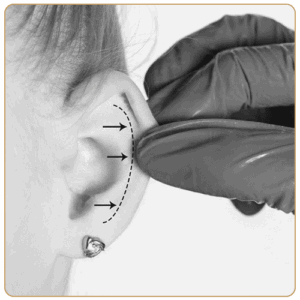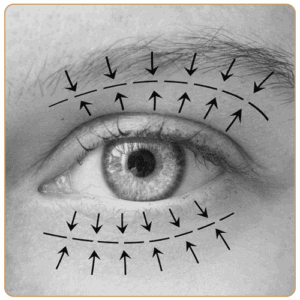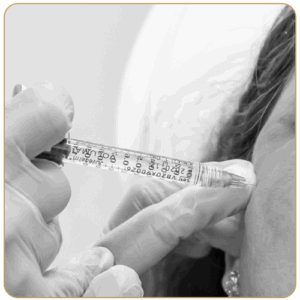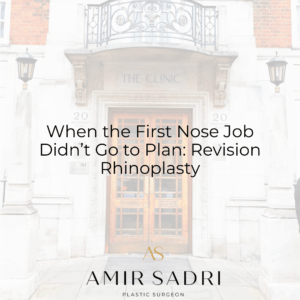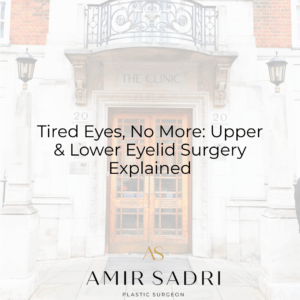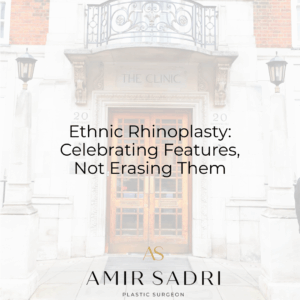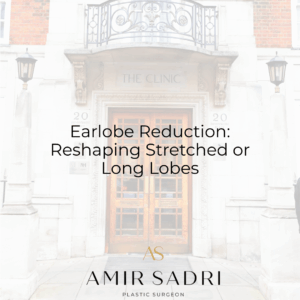Preservation rhinoplasty is a broad term used to describe various techniques and approaches when performing rhinoplasty. This may not be possible in all patients.
Broadly speaking, preservation rhinoplasty refers to the “push down” or “let down” techniques used to treat a hump on the bridge of the nose. It is only possible in those patients who have never had a rhinoplasty before.
The other aspects of preservation rhinoplasty includes surgery to the tip and the ligaments in the nose. Surgery for the tip traditionally involves removal of excess cartilage; therefore making the nose a better shape. In the preservation approach the cartilages are reshaped and repositioned with stitches.
Overall, for those patients who are appropriate candidates for preservation rhinoplasty, the operation improves the appearances of the nose, and maintains its function. It can also reduce the chances of long term changes that may take place after traditional or “structural” rhinoplasty.

WHAT ARE THE BENEFITS OF PRESERVATION RHINOPLASTY
The benefits of preservation rhinoplasty include less post operative swelling and faster recovery due to the way the nose is operated on. In this operation the underlying structures in your nose are accessed and repositioned and remoulded to give your nose a beautiful shape.
Some of the other benefits can include:
A smoother nasal bridge because the natural bridge of the nose has been lowered instead of cut away.
Less chance of breathing difficulties and airway disruption because the natural anatomy of the nasal valves have been persevered.
Easier revisional surgery if needed because the natural anatomy has been maintained.
Who can benefit from preservation rhinoplasty
Patients who have not had nasal surgery (rhinoplasty, septoplasty, septorhinoplasty) in the past are broadly speaking suitable for preservation rhinoplasty.
When it comes to dorsal preservation, the most suitable patients are those with “nice” dorsal aesthetic lines. Preservation rhinoplasty can be performed in deviated and crooked noses.
Can preservation rhinoplasty be done on someone who has had a previous injury to their nose
Trauma to the nose can lead to deviation or crookedness in the nose. Preservation rhinoplasty can be possible in these individuals. Axis deviation correction can be achieved with a lower septal strip or “Cottle technique” with asymmetrical osteotomies of the bony vault of the nose.
WHEN IS AN OPEN RHINOPLASTY NECESSARY?
Patients who required complex dorsal (nasal bridge) and nasal tip work as well as those patients who have had a rhinoplasty in the past are generally speaking candidates for an open rhinoplasty. This is because the columellar incision allows better visualisation of the nasal anatomy and easier suturing and insertion of grafts.
WHAT ARE THE COMMON RHINOPLASTY PROCEDURES?
The three most common rhinoplasty procedures included, reducing the bump on the nasal bridge. Reducing the size of the nasal tip. And the third is reducing the droopiness of the nasal tip (the end of the nose).
Other procedures include straightening a deviated or crooked nose, reducing the projection (how the nose sticks of from the face) and improving the nasal airway.
DOES THE NOSE CONTINUE TO GROW FOREVER?
This is a complicated subject. Although the cartilages in the nose do continue to grow, there are age related changes in the nose that have a greater impact on the appearance and function of the nose. These include; ligaments laxity which leads to the droopy nasal tip and hanging columella. Thinning of the skin over the bridge which shows irregularities and thickening of the skin over the tip.
Older peoples’ noses
In older patients, there can be two issues that need to be taken into consideration. There are age related changes to the nose and the psychological aspects to consider.
The age related changes include ligaments laxity and changes in skin quality. This means that the irregularities are more visible particularly near the bridge and over the bony vault where the skin thins. The skin becomes thicker over the tip and combined with the ligament laxity leads to a larger more droopy nasal tip.
Another important point to consider in older patients is that the skin does not contract and shrink as much after rhinoplasty. This means that it does not conform to the underlying nasal skeleton, therefore detracting from the overall outcome.
Patients who have had a rhinoplasty need time to “get used” to their new nose and appearance. In young patients this is easier and does not take as long. In older patients this can be harder and can take longer.
WHEN IS AN OPEN RHINOPLASTY NECESSARY?
Patients who required complex dorsal (nasal bridge) and nasal tip work as well as those patients who have had a rhinoplasty in the past are generally speaking candidates for an open rhinoplasty. This is because the columellar incision allows better visualisation of the nasal anatomy and easier suturing and insertion of grafts.
WHAT ARE THE COMMON RHINOPLASTY PROCEDURES?
The three most common rhinoplasty procedures included, reducing the bump on the nasal bridge. Reducing the size of the nasal tip. And the third is reducing the droopiness of the nasal tip (the end of the nose).
Other procedures include straightening a deviated or crooked nose, reducing the projection (how the nose sticks of from the face) and improving the nasal airway.

DOES THE NOSE CONTINUE TO GROW FOREVER?
This is a complicated subject. Although the cartilages in the nose do continue to grow, there are age related changes in the nose that have a greater impact on the appearance and function of the nose. These include; ligaments laxity which leads to the droopy nasal tip and hanging columella. Thinning of the skin over the bridge which shows irregularities and thickening of the skin over the tip.
Older peoples’ noses
In older patients, there can be two issues that need to be taken into consideration. There are age related changes to the nose and the psychological aspects to consider.
The age related changes include ligaments laxity and changes in skin quality. This means that the irregularities are more visible particularly near the bridge and over the bony vault where the skin thins. The skin becomes thicker over the tip and combined with the ligament laxity leads to a larger more droopy nasal tip.
Another important point to consider in older patients is that the skin does not contract and shrink as much after rhinoplasty. This means that it does not conform to the underlying nasal skeleton, therefore detracting from the overall outcome.
Patients who have had a rhinoplasty need time to “get used” to their new nose and appearance. In young patients this is easier and does not take as long. In older patients this can be harder and can take longer.
TIPS FOR RECOVERY AFTER RHINOPLASTY
Before rhinoplasty it is important to stop smoking. Smoking affects the oxygen carrying capacity of the blood. This can have an effect on wound healing.
After rhinoplasty, and especially in the first six weeks it’s important not to engage in heavy physical exertion (weightlifting, long distance running, manual labour type work). These activities increase you blood pressure and lead to more swelling and pressure discomfort in your nose.
Cleaning your nose with saline nasal douches help remove secretion and old blood. This keeps your nasal airway clear and the internal wounds clean.
How can the shape of the nose result in breathing difficulties?
A nose that looks good works well. A droopy nasal tip can limit airflow at the external nasal valve. When the tip is elevated patients feel that it is easier to breath.
A deviated nose can lead to blockage of airway on one side which can cause breathing difficulty. A septoplasty to correct the deviation can improve the nasal airway.
Commonly, nasal shapes seen after poorly executed rhinoplasty can lead to airway issues. This includes collapse of the upper lateral cartilages leading to a reduction in the internal nasal valve angle and subsequent airway compromise. Reconstruction of the mid-vault, which restores the internal nasal valve angle and collapse of the upper lateral cartilages can help resolve the airway compromise.




